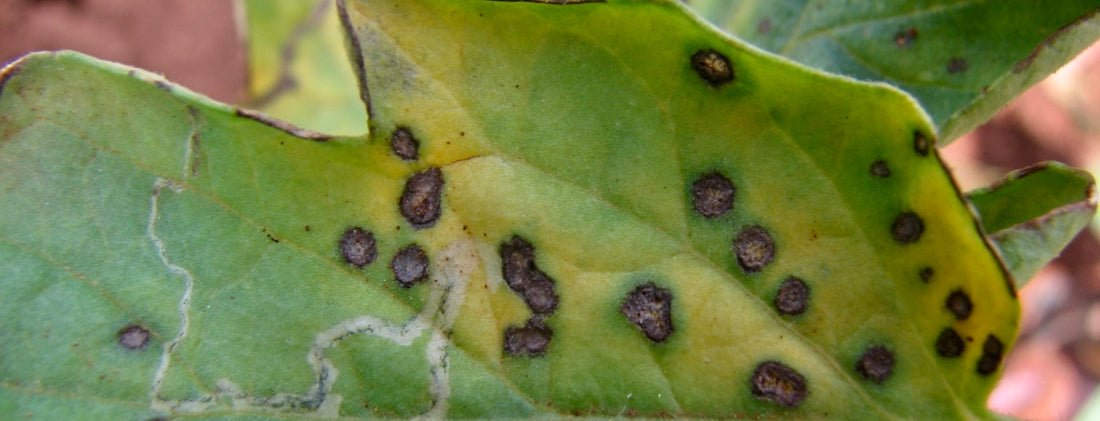An omnipresent disease. It is most commonly found on fiber crops but can also occur on plants forming natural medicines, notably Cannabis ruderalis.
How Septoria affects crops
Septoria leaf spot will reduce crop biomass and overall yield, as photosynthesis is disturbed, the stomata’s function ceases and the plant focuses its attention on fighting damage created, therefore sacrificing energy for reparation over accumulation of moles (light accumulation).
The genus of Septoria contains over 1070 different species. The two species most relevant to this topic are:
- Septoria neocannabina
- Septoria cannabina

Septoria Life Cycle
Septoria can be diagnosed very early on as spores are atmospheric and are carried by wind, moving from one plant to another and then crop to crop. Damp, moist conditions are the most desirable for septoria.
The spores germinate on the plant surface by creating a germ tube, the germ tubes then penetrate the interior of the leaf, through openings between the leaf cells called Stomata. The disease in field is not visible to the naked eye, young plants that are infected appear green and healthy but in the leaf the development of the fungal mycelium begins to target the leaf cells, the cells collapse and the chlorophyll necessary for photosynthesis is destroyed with the leaves becoming increasingly yellow or brown.
Within the decomposing leaf tissue, the pycnidia develop the fruiting bodies of Septoria tritici, within the pycnidia, spores are forming, as they take up water the spores swell then in dryer weather conditions the surrounding tissue shrinks faster than the developing spores.

Thus forcing them to be squeezed out from pycnidia onto the surface of the decaying leaf. The impact of further rainfall causes the spores to break up releasing the spores, the spores carried in the rain are then splashed onto other leaves and surrounding crops while others move freely in the atmosphere and thus the disease cycle begins again.
Treatment
No true effective biocontrol against yellow leaf spot fungi is available, however copper-based fungicides have shown to have some effect on reducing the spread of yellow leaf spot septoria.
The best practice seems to be the employment of crop rotations, reduced nitrogen availability and an increase of phosphorus and potassium, avoid foliar or overhead spray applications, carefully pruning off damaged or infected leaf matter.
References: Mushtaque et al. 1973, Ghani 1975/78, (HPD) Watson, Mcpartland, Clarke/101, Szembel 1927, Gamalitskaia 1964, Adama agricultural solutions




